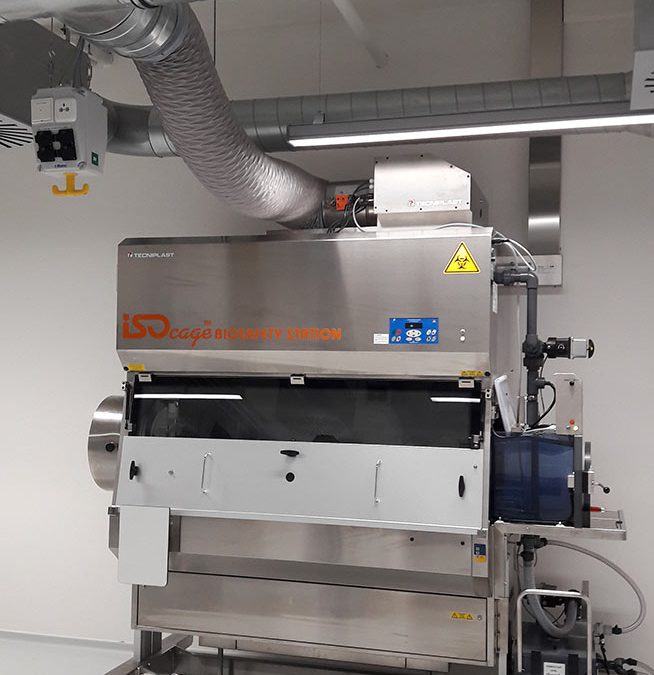If toxic gases and vapors are expected to be present during the use of the BSC, the CDC/NIH states, “Type A2 cabinets used for work with minute quantities of volatile toxic chemicals and trace amounts of radionuclides required as an adjunct to microbiological studies must be exhausted through properly functioning exhaust canopies.” During the Standard 49 review process, an in-depth discussion of exhausting A2 BSC’s took place. Hard connection of the exhaust and its associated issues were discussed. The discussion first took the position that if we continue to recommend hard connection, what criteria must be established to assure a proper installation. The criteria discussed were the following:
1) Being a hard connection, the internal blower must be interlocked in the event of low exhaust flow or an exhaust system failure. This is accomplished by installing an exhaust monitor in the duct above the BSC and electrically interlocking the BSC fan via a relay. This will ensure that if there is insufficient exhaust, the BSC fan will shut down and not push any contaminated materials out through the work access opening.
2) A gas-tight damper should be installed above the exhaust transition for shut-off during a decontamination process.
3) The cabinet fan on/off function requires interlocking to the exhaust on/off function.


Recent Articles
- Gnotobiotic facilities: writing inside isolators 4 April 2022
- Germ-free cage sterilization 24 January 2022
- Microbiota and its importance in aging 25 October 2021
- Procedural diversity and technical choices working with gnotobiotic mice in IVCs. (part 2) 27 September 2021
- Procedural diversity and technical choices working with gnotobiotic mice in IVCs. (part 1) 30 August 2021
DVC – Digital Ventilated Cage for digital vivarium

The DVC® is capable to provide novel insights and enhance animal welfare checks thanks to the automatic data collection directly from the cage level. Specifically designed DVC® board enables different benefits for the researchers and vivarium people.

